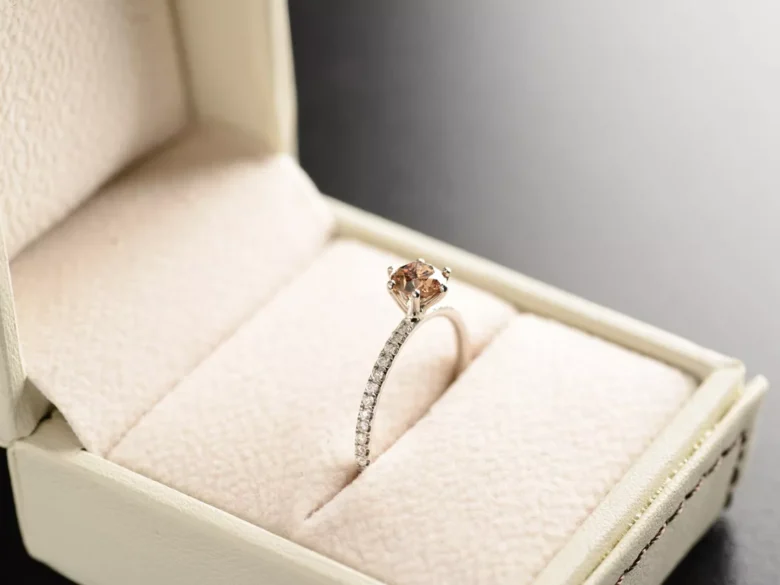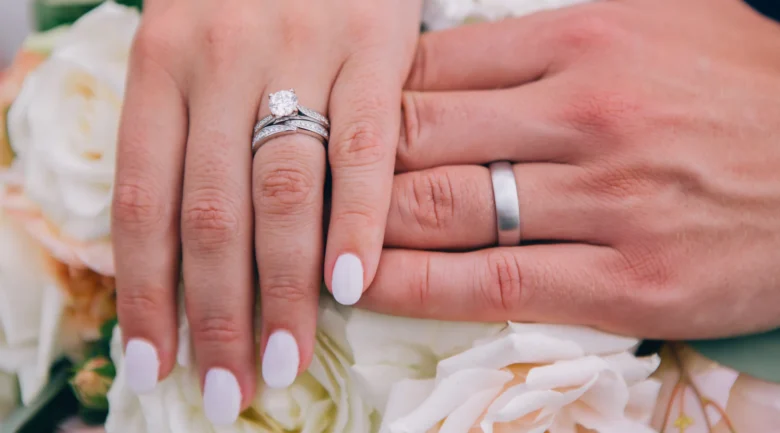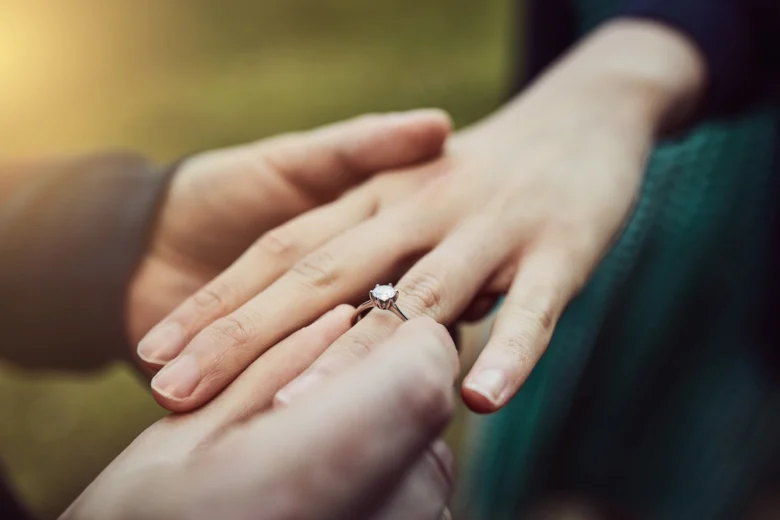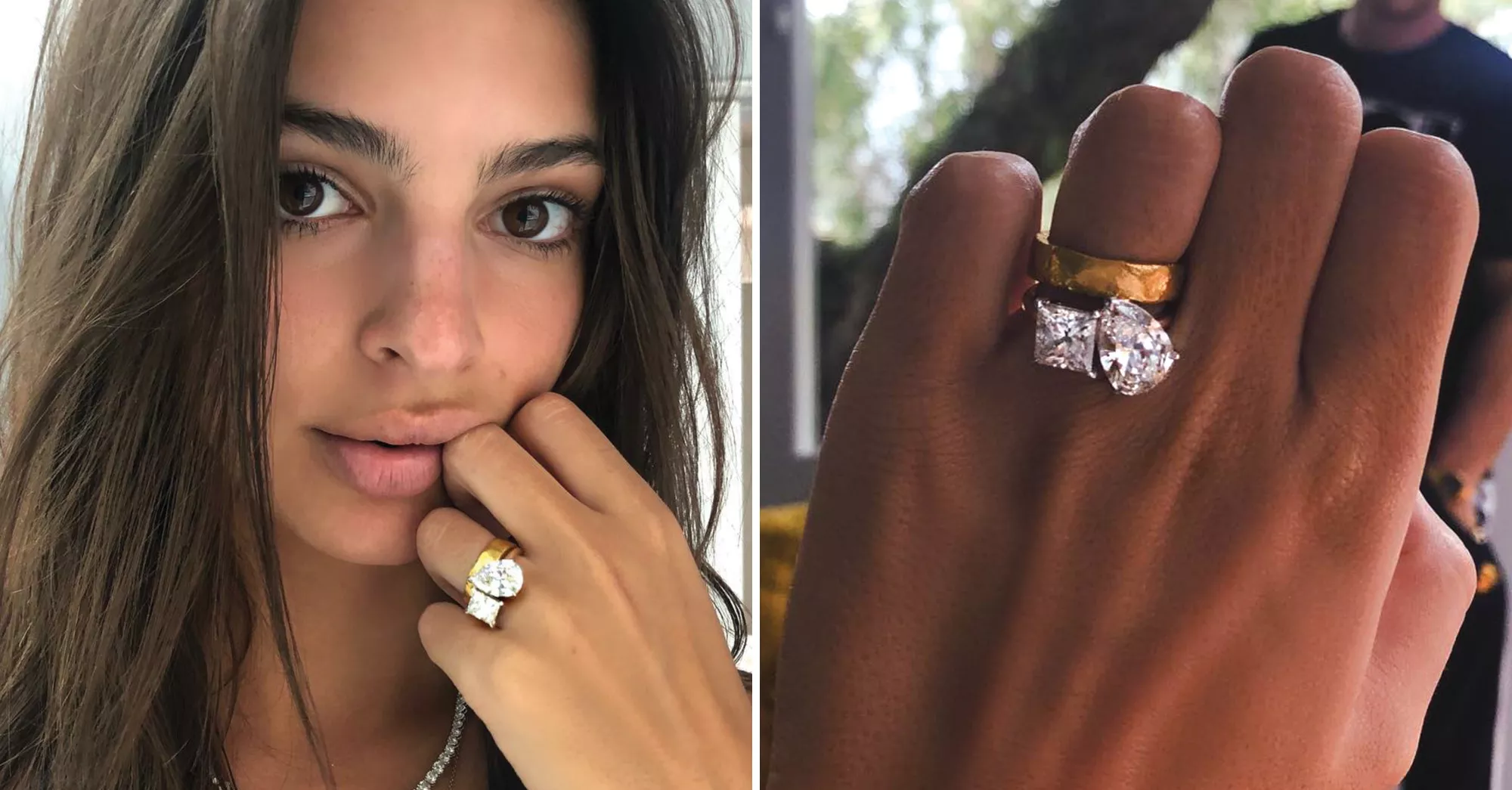Love is a profound and multifaceted emotion that has captivated humanity throughout history. It comes in countless forms, but one of the most profound expressions of love is the commitment to a lifelong partnership. This commitment, often marked by the exchange of engagement and wedding rings, is a universal symbol of love’s enduring power. But what comes first—the engagement or the wedding ring?
In this exploration, we will dive into the order of love, examining the significance of engagement and wedding bands, their historical roots, cultural variations, and the emotional weight they carry. By understanding these aspects, we can better appreciate the role of these rings in modern relationships and the personal preferences that guide our choices.
Explanation of Engagement as a Symbol of Commitment

Engagement rings, typically given before the wedding, are a symbolic gesture of a couple’s intent to marry. They serve as a tangible representation of love’s promise and the commitment to a shared future. The act of proposing with a band is a pivotal moment, filled with anticipation and emotion.
The ring signifies the beginning of a new chapter in a couple’s journey. It is a public declaration of love and a promise to stand by each other’s side through thick and thin. The band itself often features a sparkling gemstone, most commonly a diamond, symbolizing the brilliance and endurance of the love between two people.
Historical Significance
They, on the other hand, are steeped in historical significance. The tradition of exchanging bands dates back thousands of years to ancient Egypt, where they were worn on the ring finger of the left hand due to the belief that it contained a vein directly connected to the heart. This practice spread to ancient Rome, where it became a symbol of ownership and commitment in marriage.
Over time, the significance evolved. They became a powerful symbol of unity and fidelity. The unending circle of the ring represented eternity, while the act of placing it on the partner’s finger signified a lifelong commitment.
Comparing Engagement and Wedding Ring Traditions
The key difference between engagement and wedding bands lies in their timing and symbolism. They are a precursor to the wedding, symbolizing the intention to marry, while bands are exchanged during the marriage ceremony, sealing the vows made before family and friends.
Wedding bands are typically more basic and understated, emphasizing the enduring nature of the partnership, as opposed to engagement bands, which are sometimes more ornate, often having brilliant gemstones and intricate patterns. These customs can, however, differ greatly based on culture and individual preferences.
Cultural Variations in Engagement and Wedding Rituals

Cultural diversity enriches the world of engagement and wedding rituals. In some cultures, rings are replaced with other tokens of commitment, such as promise rings or family heirlooms. For example, in Indian culture, the Mangalsutra necklace is a symbol of marital commitment.
Wedding band customs also vary greatly. In some countries, such as Russia and Greece, couples wear their bands on the right hand, while in others, like the United States and most European countries, the left hand is the customary choice. These variations reflect the diverse ways in which love and commitment are expressed around the globe.
The Emotional Significance
Couples have a particular place in their hearts for engagement bands. Choosing an engagement band is a very intimate and emotional process. It entails choosing a bond that not only expresses the love and commitment shared between lovers but also the recipient’s style.
The moment of proposing with an engagement band is charged with emotion, often accompanied by nervousness and excitement. It’s a declaration of love and the beginning of a lifelong journey together. The engagement band becomes a cherished keepsake, a reminder of that pivotal moment when two lives became intertwined.
Choosing the Perfect Ring
Selecting the perfect engagement ring can be a daunting task, but it’s an opportunity to demonstrate thoughtfulness and devotion. The choice of style, metal, gemstone, and setting should align with the recipient’s taste and personality.
Many individuals opt for a classic diamond ring, but there’s a growing trend of choosing alternative gemstones like sapphires, emeralds, or even lab-grown diamonds, reflecting a desire for uniqueness and sustainability. Customization also plays a significant role, as couples design them to tell their unique love story.
The Role in Modern Relationships

In today’s fast-paced world, the role of rings has evolved. While they continue to symbolize commitment, they also serve as a visible sign of a couple’s status. Social media platforms are awash with announcements, showcasing not only love but also the desire for public validation.
Moreover, engagements are no longer confined to traditional norms. Couples of all genders, ages, and backgrounds are embracing engagement as a way to solidify their commitment. It’s a beautiful testament to the evolving nature of love and partnership in the 21st century.
The Symbolism of Exchanging Rings
The wedding ring exchange during the marriage ceremony is a powerful and emotionally charged moment. As the couple places the rings on each other’s fingers, they make a solemn vow to love and cherish one another for the rest of their lives. It is the culmination of months or even years of planning and anticipation.
The ring, with its unbroken circle, symbolizes eternity. It represents the promise to stand by each other’s side through all the trials and joys life may bring. The exchange also serves as a public declaration of commitment before witnesses, reinforcing the significance of the union.
How Engagement and Wedding Rings Complement Each Other
Wedding and engagement rings are not incompatible; rather, they elegantly contrast one another. The ring formalizes the promise made during the engagement, while it represents the path toward marriage. They form a whole love narrative when read together.
The ring serves as a reminder of the excitement and anticipation that led to the big day, while it represents the lifelong bond formed during the ceremony. They are two parts of a whole, each with its unique significance, but both equally important in the narrative of love and commitment.
Conclusion: The Order of Love and Personal Preferences

In the grand tapestry of love and commitment, the order of engagement and wedding rings is a matter of personal preference and cultural tradition. Some choose to follow the traditional sequence, while others forge their unique path. What truly matters is the love and commitment shared between partners.
Engagement bands are the beautiful prelude to a lifelong commitment, and they are the enduring symbol of that commitment. Together, they form a powerful testament to the profound love that binds two people together. In the end, whether you say “yes” to the engagement ring before it or vice versa, what truly matters is the love story you write with your partner—a story of love, commitment, and a lifetime of shared moments.

